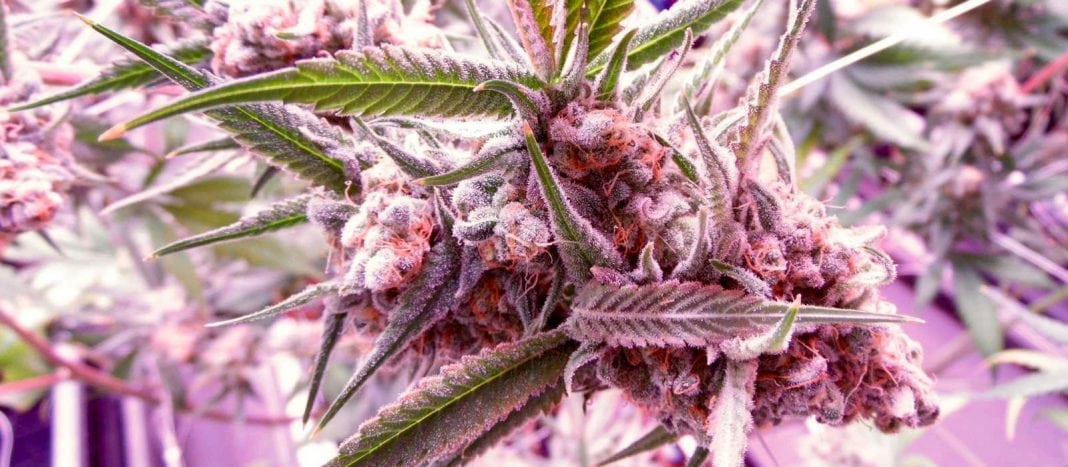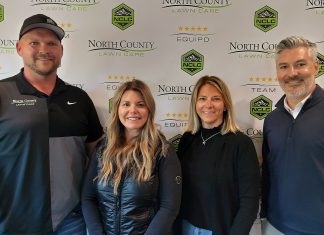Submitted by: Danielle Rosellison, Trail Blazin’ Productions
Ihave heard stories of cannabis helping everything from shingles to rheumatoid arthritis to seizures to gout, psoriasis, eczema, Zellweger Syndrome, PTSD, to sleep … the list goes on and on. What’s the deal?
Cannabis is an incredibly complex plant. However, its classification as a Schedule One narcotic on the Controlled Substances Act since 1970-something has hindered our ability to get quality research on the plant. Cannabinoids, such as Tetrahydrocannabinol (THC) and Cannabidiol (CBD), are chemical compounds in the cannabis plant that are believed to offer therapeutic benefits. CBD reduces pain and inflammation. Cannabigerol (CBG) creates muscle relaxation and has anti-anxiety properties.
But there is more to this amazing plant than cannabinoids. There are other vital components to cannabis which have been used for thousands of years for medicinal benefits: Terpenes.
What is a terpene?
Terpenes are organic hydrocarbons found in nature. In really simple terms, they are the smell you experience. There are more than 30,000 terpenes detected across nature in plants, flowers, herbs and fruits and we see their effects in medicine, food, beauty treatment, body care and spiritual practices. Think aromatherapy. You know when you get a massage, sometimes they’ll ask you to “smell these and pick the one you like.” Those are terpenes creating that smell. Each of our bodies prefer different terpenes, which is why some of us have a tendency to go for the eucalyptus aroma while others will always choose lavender. It’s how the terpenes, and their therapeutic properties, affect our bodies.
There are more than 125 terpenes found in cannabis (so far) which are responsible for the odor and taste, as well as the subjective experience everyone has while experiencing cannabis.
Terpenes are highly volatile, which means it’s very easy to destroy them. Therefore, the curing process is much more indicative of quality cannabis than when the product was harvested. Terpenes vary, not just between strains and growing practices, but between harvests and cures. The only way to really know what terpenes the product you’re purchasing exhibits is to have it tested. While terpene tests are not currently required by Washington State, many cannabis growers pay for terpene tests in an effort to educate consumers. Experienced growers know the quality of product is just as much in the terpenes, as the cannabinoid profile.
More complex terpene profile = more robust high with therapeutic benefits
What does a terpene do?
Terpenes offer many natural therapeutic benefits such as analgesic, bronchodilator, anti-stress, anti-depressant, anti-viral, anti-inflammatory, antioxidant, anti-fungal, antibacterial, antimicrobial – The list goes on and on.
“Cannabinoids are the car and terpenes are the driver”
Terpenes have all these amazing therapeutic qualities, but how do they get to where they can do the most good? When combined with cannabis, terpenes act on receptors and neurotransmitters in our Endocannabinoid System – the physiological system that maintains our health! And cannabinoids are the vehicle to get the terpenes to where they can do the most good.
So, in super simple terms, the cannabinoids take a direct highway to the Endocannbinoid System, and then the terpenes work their magic to balance our health.
It is the combination of terpenes (terpene profile) and what therapeutic benefits they each bring to the table and in what amount (percentage) that greatly influences how you feel when using cannabis.
Which terpenes do I want?
The easiest way to determine which terpenes your body wants is to smell them. It doesn’t matter if you’re smelling actual cannabis, or terpenes derived from plants or whatever. Find the smell you like and that’s the cannabis product that will probably work the best for your body. Here is some fun information to help you navigate the world of terpenes and what you may, or may not, be drawn to:
Myrcene
Found in: Mango, Lemongrass, Hops
Benefits: Sedative, Pain Relief
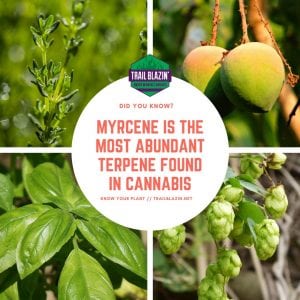
A-Pinene
Found in: Pine Trees, Rosemary, Citrus Rinds
Benefits: Anti-Bacterial, Bronchodilator

Limonene
Found in: Citrus Fruit Rinds
Benefits: Anti-Anxiety, Boosts Energy
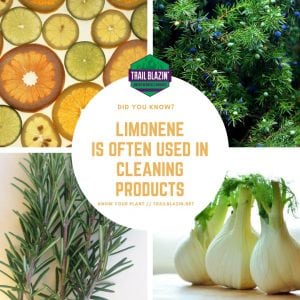
Humulene
Found in: Hops, Basil, Sage
Benefits: Anti-Inflammatory, Appetite Suppressant

Caryophyllene
Found in: Ginseng, Hops, Clove
Benefits: Anti-Fungal, Reduces Anxiety
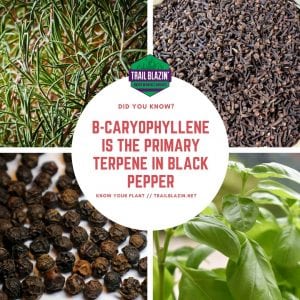
Terpinolene
Found in: Apples, Ginger, Cumin
Benefits: Anti-Oxidant, Inhibits Cancer Cell Growth
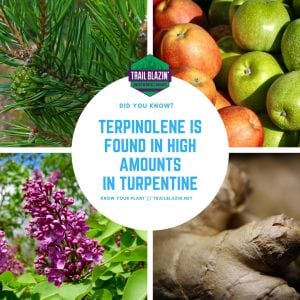
Linalool
Found in: Lavender, Cinnamon, Bay Leaf
Benefits: Anti-Anxiety, Fights Acne
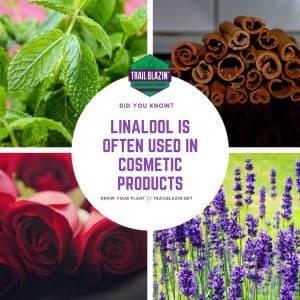
Nerolidol
Found in: Jasmine, Lavender, Tea Tree
Benefits: Sedative, Natural Insect Repellant
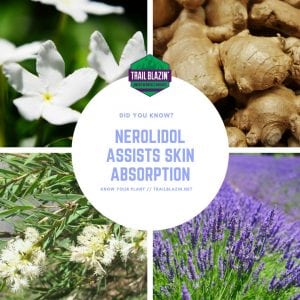
Ocimene
Found in: Mint, Kumquat, Orchids
Benefits: Anti-Viral, Decongestant
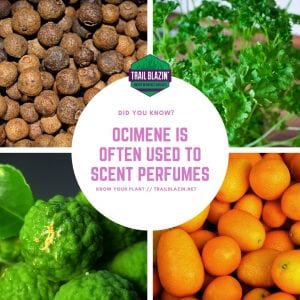
Bisabolol
Found in: Chamomile, Brazilian Candeia Tree
Benefits: Anti-Irritant, Fights Leukemia Cell Growth

Disclaimer – None of these statements have been evaluated by the FDA. This product is not intended to diagnose, treat, cure or prevent any disease.
Danielle Rosellison is an owner and operating manager of Trail Blazin’ who cultivates award winning, pesticide free, sustainably grown with LEDs and a water reclamation system, legal cannabis. She is also the president of The Cannabis Alliance, a non-profit dedicated to the advancement of a sustainable, ethical and vital cannabis industry. In her spare time (ha!), she loves to travel, read, ski (or snowboard) and see live music with her kids and her best friend and husband, Juddy.





























